NJW&C 14: Nice Jewish Comics — The Birthday Installment!

Hey, Kids! It’s Nice Jewish Words & Comics!, the latest installment from Neil Kleid's monthly newsletter with updates and info about his latest projects!
Happy birthday to me, and welcome to my virtual birthday party!
Yes, we delayed this installment of the newsletter by a week, so it would coincide with my 49th birthday (which is on May 21st), and to celebrate both that and the end of Jewish American Heritage Month, we’re going to talk about my Jewish comics, some Jewish comics I think you might like, and at the end I’m going to give you a present. So let’s dive in, shall we?
Take it away, crazy Hal Jordan from Green Lantern #49!

FIRST? MY BIRTHDAY PRESENT
No, you don’t need to buy me anything. All I ask, as I have in the past, is that you VOTE!

This Thursday (May 23rd) is the last day you can vote for me and Nice Jewish Boys for this year’s Mike Wieringo Comic Book Industry Awards, an annual celebration of the creativity, skill and fun of comics. Now, we all know that awards are kinda meaningless, and that we all do comics for that Fat Comic Book Money (ha ha there’s no money. We do it so that folks can read and connect with our work, right?)But the Ringo Award is named after the late, great and much beloved Mike Wieringo, an artist whose work I have always loved and enjoyed (pick up Tellos or the Fantastic Four issues he co-authored with Mark Waid!) And to be nominated or win an award with his name attached is quite meaningful to me. ‘Ringo is greatly missed by many in our industry, and I'm so thrilled there is an award out there with his name attached to help celebrate the medium of comic books.
To that end, to celebrate my birthday, my co-authors (John Broglia and Ellie Wright, Jake Allen and Frank Reynoso) would appreciate your vote for either Nice Jewish Boys or Kings and Canvas at THIS LINK by Thursday, May 23rd.
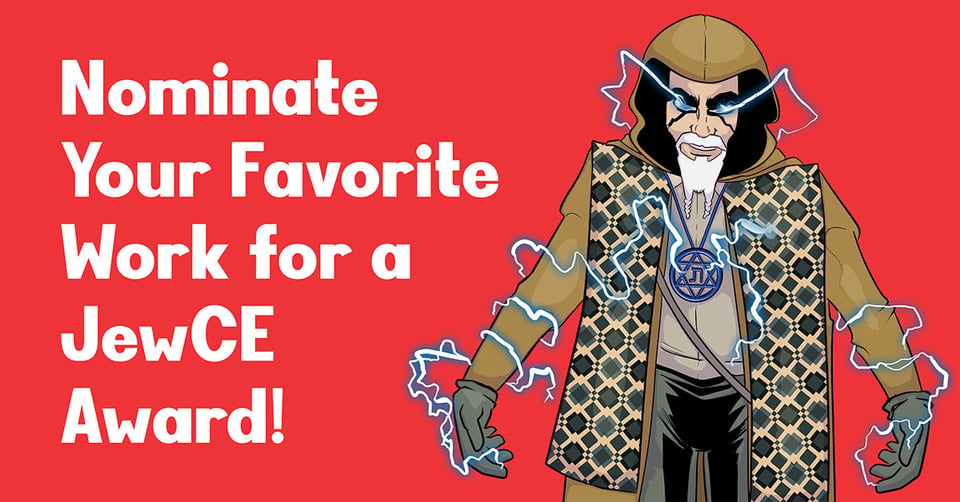
Additionally, another meaningful award you can vote for in honor of birthday is this year’s JewCe Award to celebrate comics and creators telling stories with Jewish themes. As we all remember, I won the 2023 Writer Honoree Award, but it would be great if Nice Jewish Boys could get a nomination or win for the Contemporary Topic, Fictional Narrative, or Diverse Representation categories, that’d be fantastic. Vote for us right here.
Finally, if you’ve still not read it, Nice Jewish Boys is now finally available to download and read digitally in one single volume on your Kindle app! We’re still working through print options, and will hopefully have news on that soon, but in the meantime you can buy the entire book in one file by going to THIS LINK and then downloading and reading the file via the Kindle app on your phone (iOS | Google)
Anyway, thanks for getting me something good! Now, enough of the hype and onto the content
CELEBRATING JEWISH COMIC BOOKS
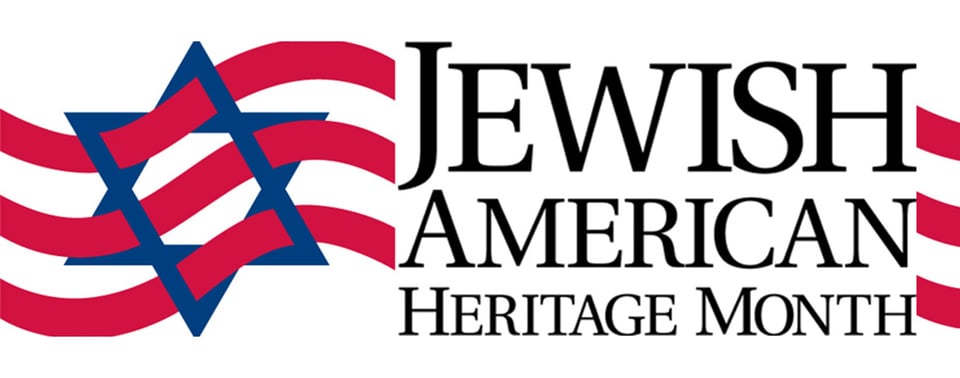
As I mentioned above, May is Jewish American Heritage Month, for those that did not know, an annual recognition and celebration of American Jews' achievements and contributions. Sure, you’ll hear a lot about politicians, filmmakers and business types, but as you well know there have been plenty of talented Jews who have contributed their literary talents to the world and especially have they done so to the medium of comic books.
Now, sure, I could sit here and go through the history of Jews helping to mold and shape our industry, but there are better books out there that could tell it better (including Sean Howe’s wonderful Marvel Comics: The Untold Story, American Comics: A History by Jeremy Dauber, and Jews and American Comics: An Illustrated History of an American Art Form by Paul Buhle.) For me, I’m always thrilled to find Jewish representation in any of the comics I love—whether or not in the mainstream superhero books I dig, or some of the fantastic independent books or graphic novels on bookstore shelves. I’ve done my best to pick up as many Jewish comics or comic books with Jewish themes, to expose myself to the authors and creators, like me, who find it important enough to tell our stories, to dig into our shared history or enrich contemporary worlds and stories with themes that shape our lives.
And so, to help celebrate those Judaically-themed books and the authors creating them, I’m going to spotlight five wonderful comic books and graphic novels—and one creator—that I think you should read during Jewish American Heritage Month (and no, none of the books or creators are me. If you’re here, hopefully you’ve already read some of mine.) Now let me state—there are plenty more amazing comic books out there which include and highlight Jewish themes, as well as wonderful creators making an effort to get them into the hands of folks who may not have seen or read them. This list is not discounting them, or saying you shouldn’t read them. Look, I didn’t include Maus on this list—probably the most well-known example of a comic book with Jewish themes, taught in schools and banned routinely—and that’s saying something. I enjoyed Maus, and have owned a copy for years. But the below five are either books that have gone under the radar, or inspired me in a way to make Jewish comics of my own…and these are the ones I’d like to highlight. That doesn’t mean you shouldn’t read Maus, We Are On Our Own, The Golem’s Mighty Swing, Moon Knight, or any other comic that talks about or features Jews. I’m just saying, try reading the ones below while you do.
Hereville, by Barry Deutsch (Abrams Books)
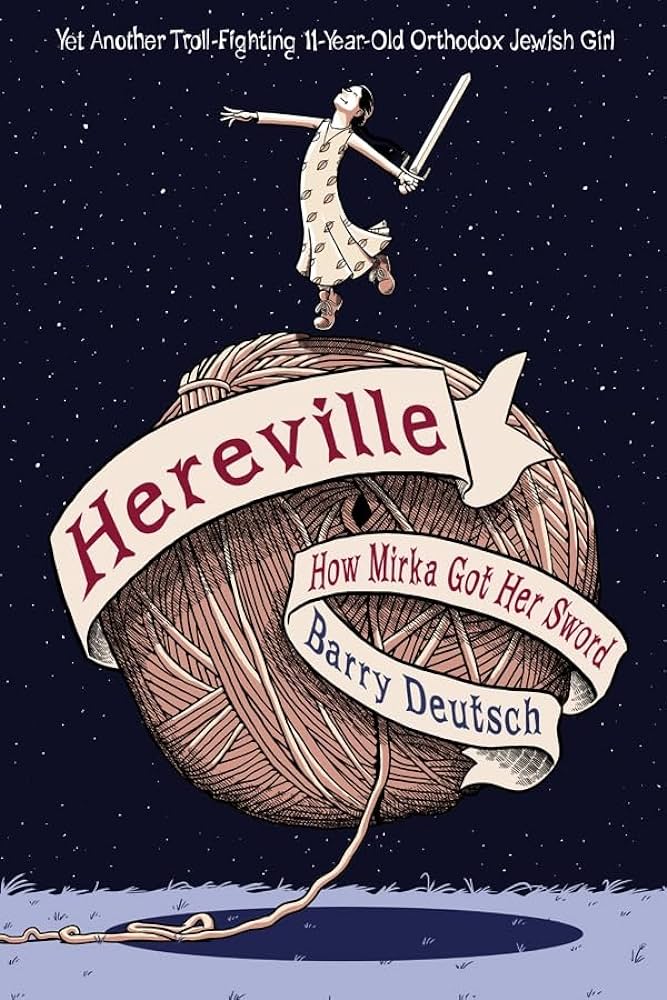
So, let’s start off strong with Hereville, a series of books featuring Mirka, an eleven year old Orthodox Jewish girl who fights trolls, monsters and other weird, supernatural stuff. Barry Deutsch does a fantastic job filling the pages of his YA graphic novels with authentic Jewish characters, Yiddish and Judaic themes which do not distract from the fun, entertaining adventures that Mirka and her family gets up to close to their home. I have loved and enjoyed each of these books, and last year they were even the basis for an actual musical!
My recommendation is starting with the first book, How Mirka Got Her Sword, and then hitting the next two in order. Then share them with an eleven-year-old girl who loves books or graphic novels. You—and she—will be glad you did.
2. The Unfinished Corner, by Dani Colman and Rachel Petrovicz, with Whitney Cigar and Jim Campbell (Vault Comics/Wonderbound)

Now, I hadn’t heard of Dani or the amazing book she made with her co-authors until very recently, and finally had the chance to tell her how much I loved it at the inaugural Jewish Comics Experience Convention at the New York Center of Jewish History when it won the first JewCE Award for Diverse Representation. And a well-earned award, it was. See, the title of The Unfinished Corner is a reference to the fact that when G-d created the universe, He left one corner of it unfinished, and also a Jewish tradition which says we are to leave a small corner of our homes unpainted. The unpainted corner is a reminder of any project that will never be finished. It is always there to be worked on and made better by those around it.
The Unfinished Corner is, at heart, an adventure story about finding connections—to friends, to faith—and follows twelve-year-old Miriam, her two best friends, and her worst frenemy as they’re whisked off my an angel to a monstrous land with a single mission: finish the Unfinished Corner. The best part of this book is not only the unique characters, or aspects of Miriam’s quest…but rather the diverse Jewish backgrounds and points of view it presents, highlighting Jews of color and digging into what Judaism and Judaic themes mean to those not descended from white European backgrounds. The book is warm and inviting, and offers a view into worlds for those who haven’t walked inside them as of yet—including me. I highly recommend this book for anyone seeking a way into Judaism, as it approaches the practice and lifestyle from multiple angles and points of view. And I applaud Vault/Wonderbound—who published the graphic novel in their first year, their infancy—because they took a bet on this unapologetically Jewish book, which is hard for some publishers to do, and I think it paid off.
3. Ragman, by Keith Giffen, Robert Loren Fleming, and Pat Broderick (DC Comics)

So, yes; two of the books on this list are going to be superhero comics. That doesn’t mean their cultural weight is any larger than that of Maus, Miriam Katin’s books, anything by the Hanukas, or any other book on this list. It just means that the book struck home with Neil, and he wants to highlight that fact.
Ragman, as those of you who know me, is a white whale character to Neil as a creator. I’ve been wanting—and trying—to write a Ragman comic book ever since I got into this industry, and have pitched my story to anyone at DC Comics who would listen (some with more advocacy than others, to be fair.) Ragman—aka Rory Regan— was created by Robert Kanigher and Joe Kubert in 1976, and original presented as an Irishman who’d served in Vietnam, and whose dad owned a junkyard, dressed in rags, and fought gangsters and drug dealers as an urban vigilante on the mean streets.
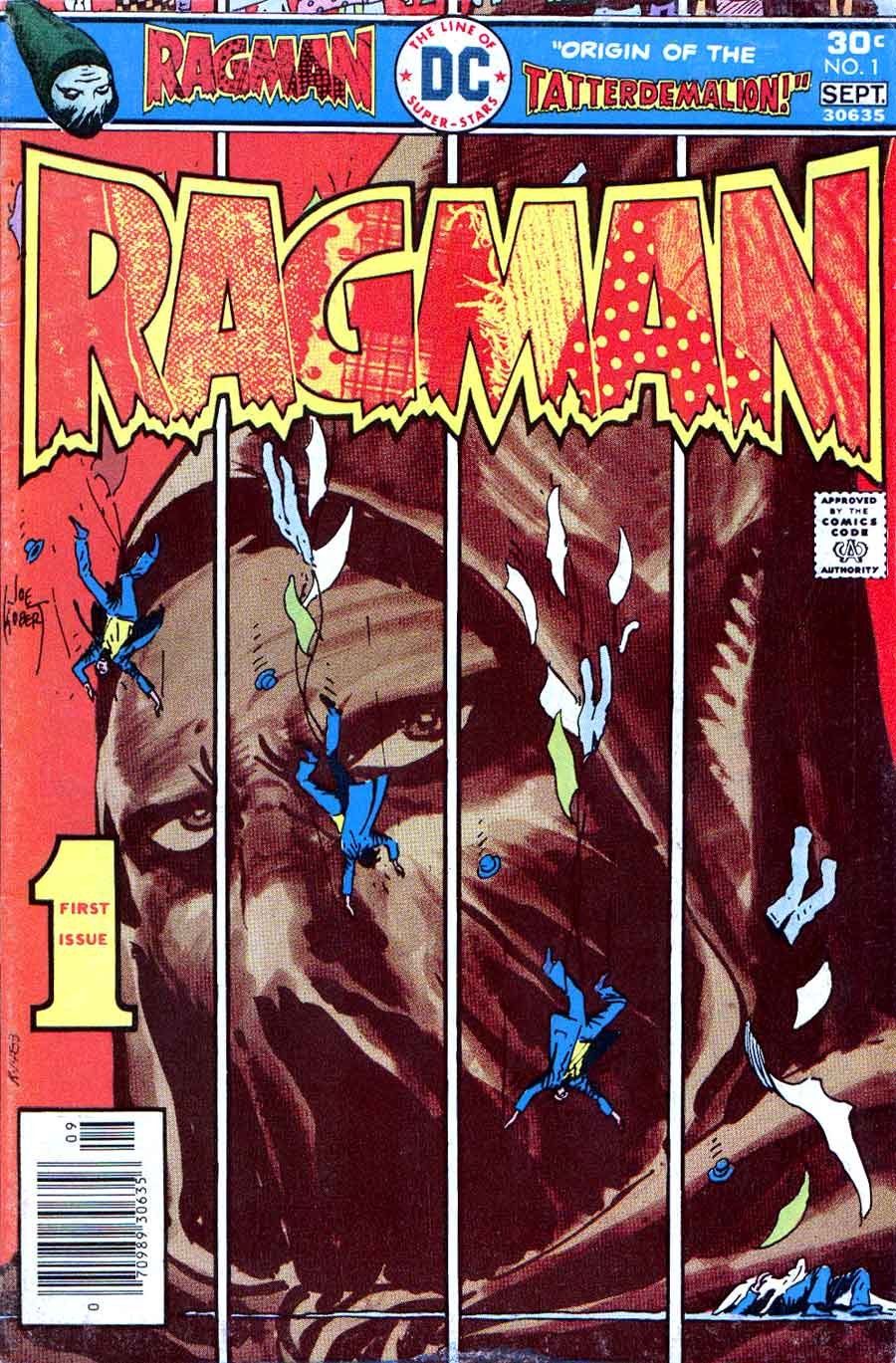
But in 1991, Giffen, Fleming and Broderick reinvented Rory as a junk-dealer who inherits a costume made of rags from his dead father—a “suit of souls”, created by the same Rabbis that made the Golem of Prague—and uses it to fight crime and mystical threats in Gotham City. Since then, Ragman has mostly been depicted not only as a supernatural hero but also traditionally as a Jew (except in the short-lived 2017 incarnation, which eliminates all aspects of the characters Judaism or previous history.) But the 1991 Ragman was the one I began with, and the one who spoke to me the most…and though it’s never been collected, it’s worth your time to hunt down the issues if you can. Issue #3 is the one that really digs into the history of Rory’s suit, and the key antagonist is, of course, a golem (and Batman—but just in the last issue!) I’m a big fan of Ragman, and this series got me to head back and buy the original Kanigher/Kubert issues which, while not really Judaic in theme, are wonderfully constructed and beautifully illustrated. There are plenty of great Ragman comics out in the world, but the 1991 series is arguably the most Jewish…and my favorite.
4. Magneto: Testament, by Greg Pak and Carmine Ci Giandomenico (Marvel Comics)
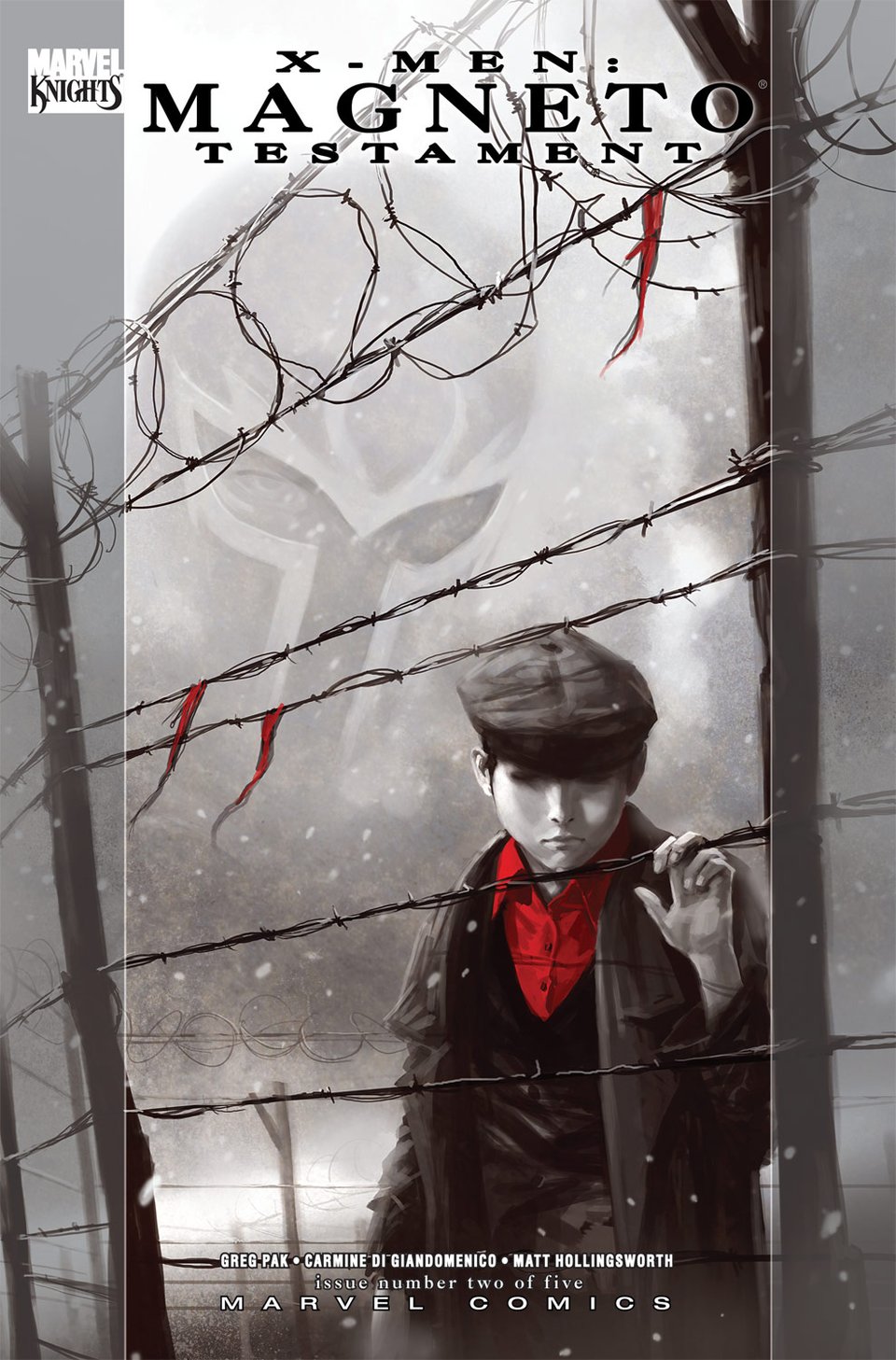
So, if like me, you’ve been enjoying the Disney+ original series X-Men ’97—or if you’ve simply read X-Men comics your entire life and seen any of the Fox films, than you know Erik Lensherr, aka Max Eisenhardt, aka Magneto, the Master of Magnetism, is not only one of the most nuanced and complicated characters in Marvel Comics…but is also a Jewish icon.
No matter which Magneto we’re talking about, reading, or watching, the character who began as a super-villain–leader of a “Brotherhood of Evil Mutants”—has gone through such an emotional and moral journey since Stan Lee and Jack Kirby (two Jewish icons, themselves) first revealed him in 1963. Over the years, Magneto’s origin has changed and evolved depending on the creators shaping their vision around him…but one pivotal moment—viscerally depicted at the start of the first X-Men film by Bryan Singer in 2000, inspired by a number of comic book scenes and references—has traditionally stuck with the masses, and helped define exactly the type of oppression and hate Magneto has fought against since his inception. This, of course, is the scene in which a young Erik, separated from his parents at the gates of a Nazi concentration camp, twists the metal of those gates with his outstretched, yearning hands. That historical touchpoint—Magneto as a Jew, Erik as a camp survivor—is incredibly important to the character’s point of view and how he will never again allow his people—Jews, but mostly mutants— to be oppressed by humans, often putting that mission at odds with Charles Xavier’s dream of human and mutant co-existence. In recent years, of course, Xavier and Magneto have seen more eye-to-eye than ever before, but despite their shared dream, Magneto’s principles—shaped by his background—has changed little.
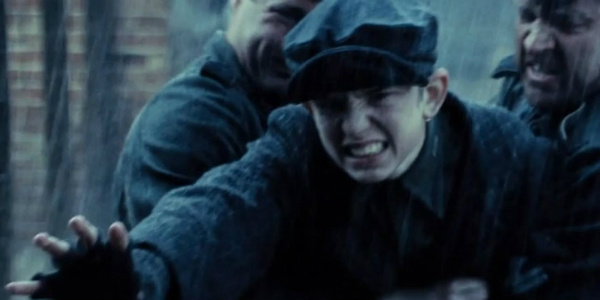
This series by Greg and Carmine, Testament, which came out in 2008 (eight years after that first X-Men movie) presents a powerful, haunting, horrific and focused look at Magneto’s struggle (as Max Eisenhardt) —as well as others, like Magda, a Romany girl—for survival during Nazi Germany and his life in Auschwitz. Respectful, a gut-punch, a superhero book that isn’t steeped in spandex, adamantium or super-heroics, Testament is well-worth reading as a fan of superhero comics and as a Jew.
5. Any graphic novel by Will Eisner. Like, seriously, any of them.
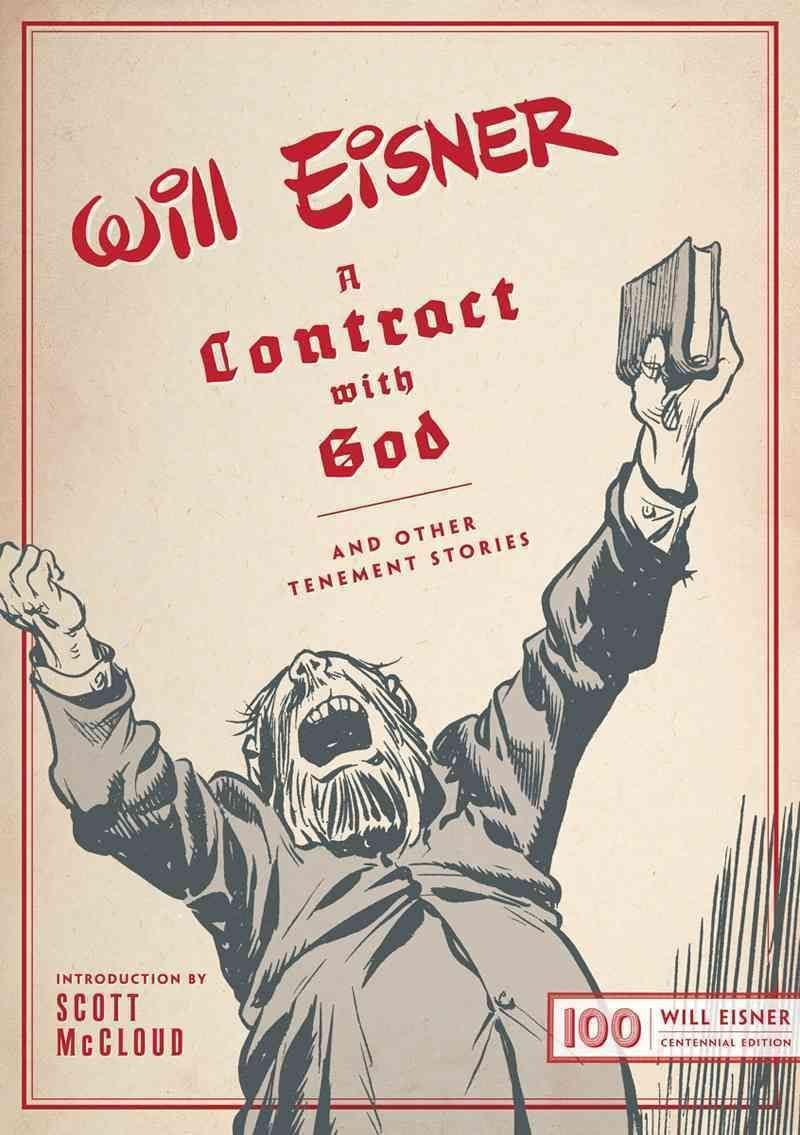
Okay, this one’s kind of a cheat, but it’s simply because I cannot decide.
Will Eisner was who many refer to as “the father of the graphic novel” and both a role model and icon to comic book creators the world over. He started in the comic strips, employing a who’s who of comic book luminaries in his packaging house, and worked his way towards creating stories with a spine—not only a reference to their physical manufacturing as books, but also the themes, motives and moralities contained within the stories…most of those, touching in some way, Jewish lives and ideas, starting with his first, A Contract With God.
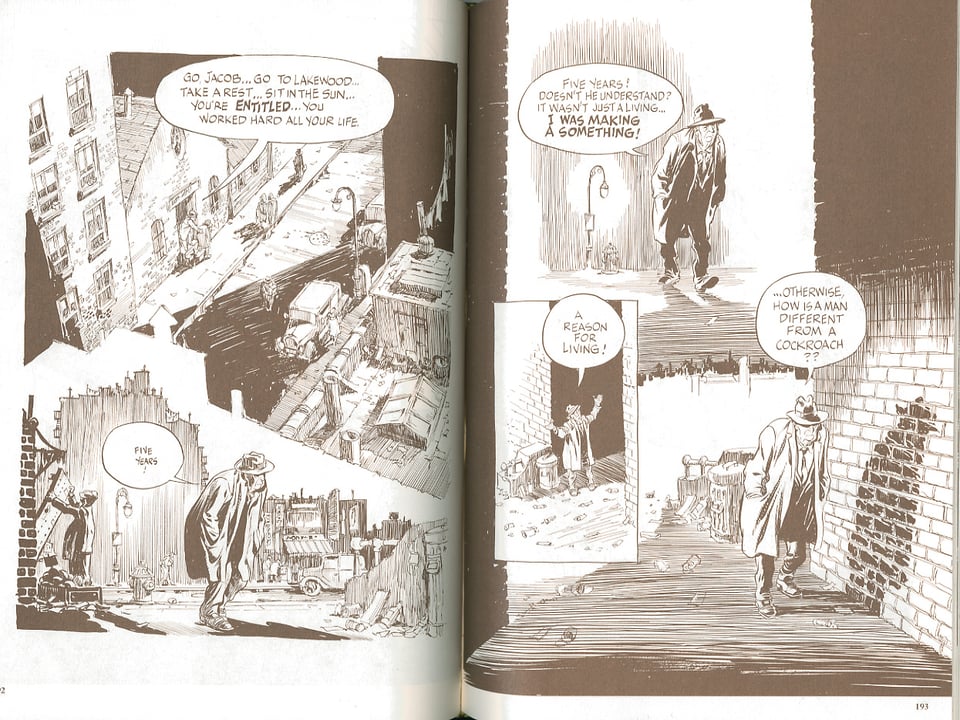
Scratch an Eisner graphic novel, and reveal some aspect of Jewish life. Most—if not all—will offer something rewarding to the intrigued and open-minded reader. Some of my favorite Eisner books aren’t necessarily as Jewish-apparent as Contract — like The Dreamer, a semi-autobiographic tale which charts Eisner’s path into the comic book industry, and The Building, a tale of four souls affected by a specific skyscraper in New York City. My absolute bangers, though, are absolutely connected to Judaism like Dropsie Avenue, the story of a single neighborhood’s evolution in New York, and The Plot, Eisner’s detailed, exhaustively researched look at the history of the insidious document, The Protocols of the Elders of Zion, an infamous work that has shaped antisemitism over many generations. In this book, Eisner, reaches back to the roots of this viral antisemitic weapon and elegantly shows how far-reaching it was, the extensive damage it has caused, and how/why its influence continues to this day. Illuminating and heartbreaking all at once.

I highly recommend purchasing or borrowing any and all of Eisner’s non-Spirit works—that being said, even The Spirit is great, though that adventure comic isn’t at all what I’d call Judaically-themed.
LAST? MY PRESENT TO YOU
As it’s my birthday, and this is my party, I’d like to leave you with a little gift for attending…and while I usually lean toward entertaining, I wanted to offer something a bit more sobering.
Back in 2018, after the Las Vegas shooting at the Route 91 Harvest Music Festival, several folks in the comic book industry pooled their talents to create a few charity anthologies including Where We Live from Image Comics, a book into which I had contributed a short story with Nick Pitarra entitled “How I Live Now” about my fears regarding guns and how exposed my kids are to them now.
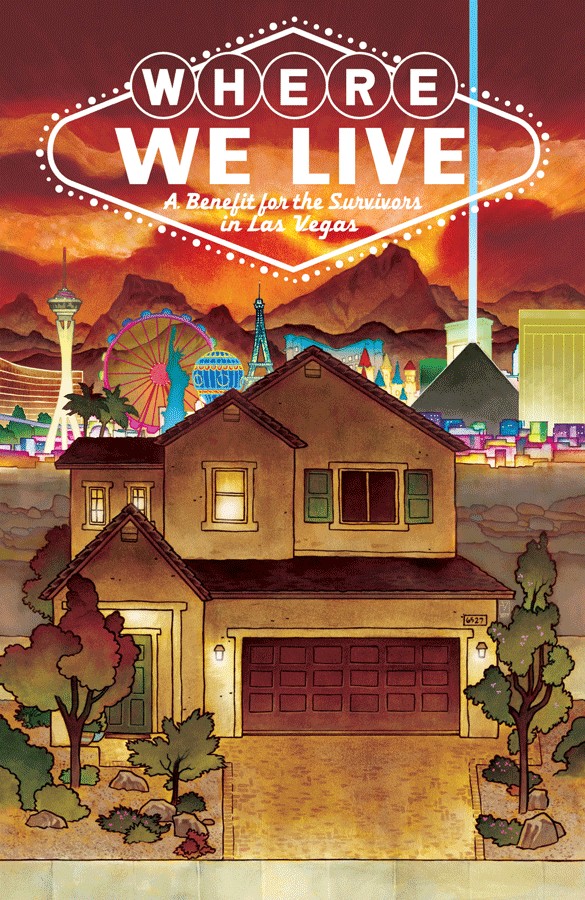
What many folks don’t know is that I actually wrote two stories back then—the second for a separate anthology that never came together, illustrated by Huseyin Ozkan and colored by Josh Jensen. The story is titled “Guns and Boys” and is a bit deeper and soul-searching—less visceral—then the one I wrote for Image. That story never really saw the light of day, and lately—in the face of continued mass shootings, as well as a rise in antisemitism and constant discussions in the Jewish community about arming up and defending homes and synagogues—I’ve been thinking a lot about that story.
I’m providing all five pages here, and while it’s not exactly celebratory, sometimes it’s okay to get a little serious on your birthday. This free comic is my gift to you today; your gift to me is reading it, taking it to heart, and having frank discussions with your children, families, friends, community leaders, and congressmen about the importance of gun safety.
Here then, is “Guns and Boys.”


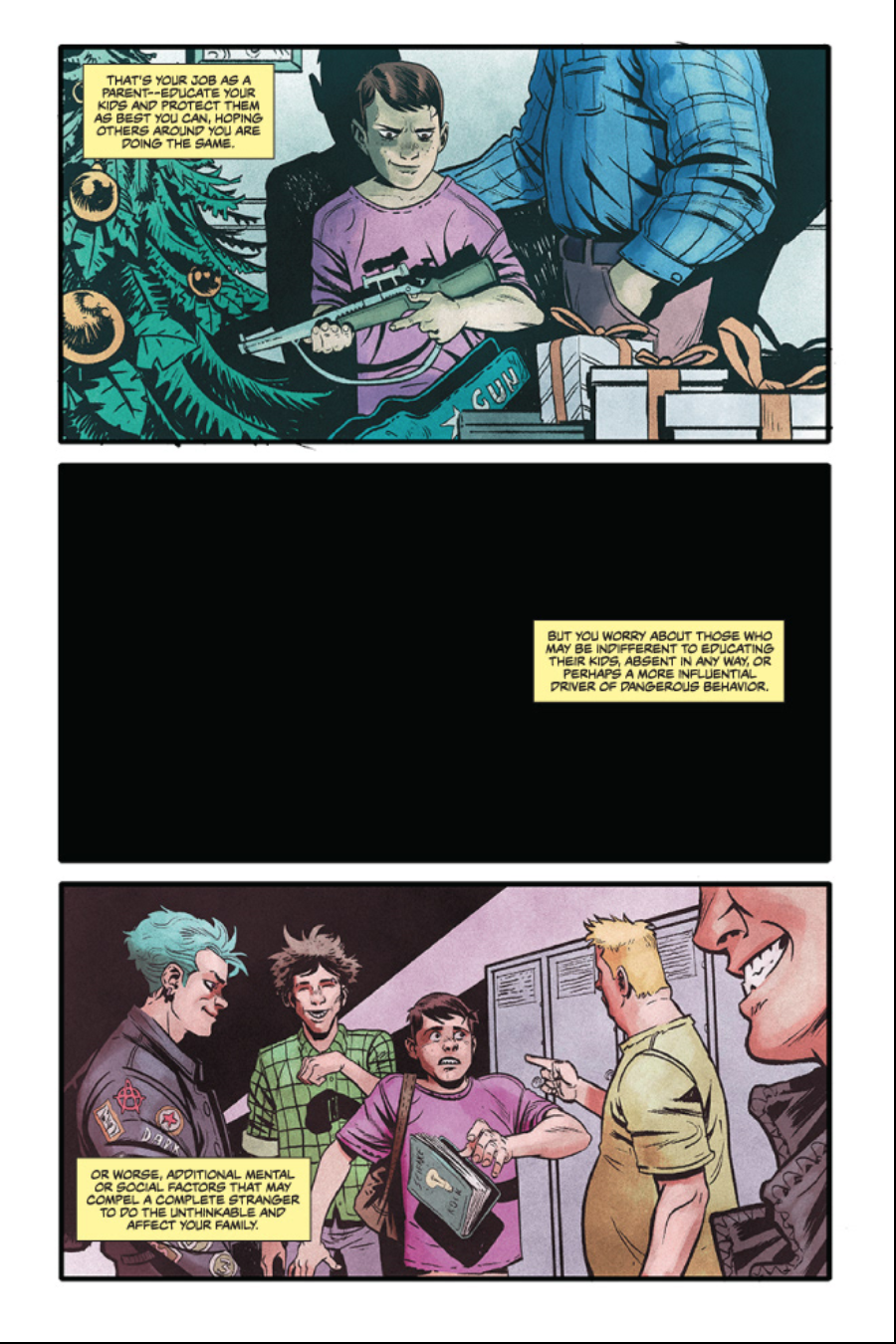
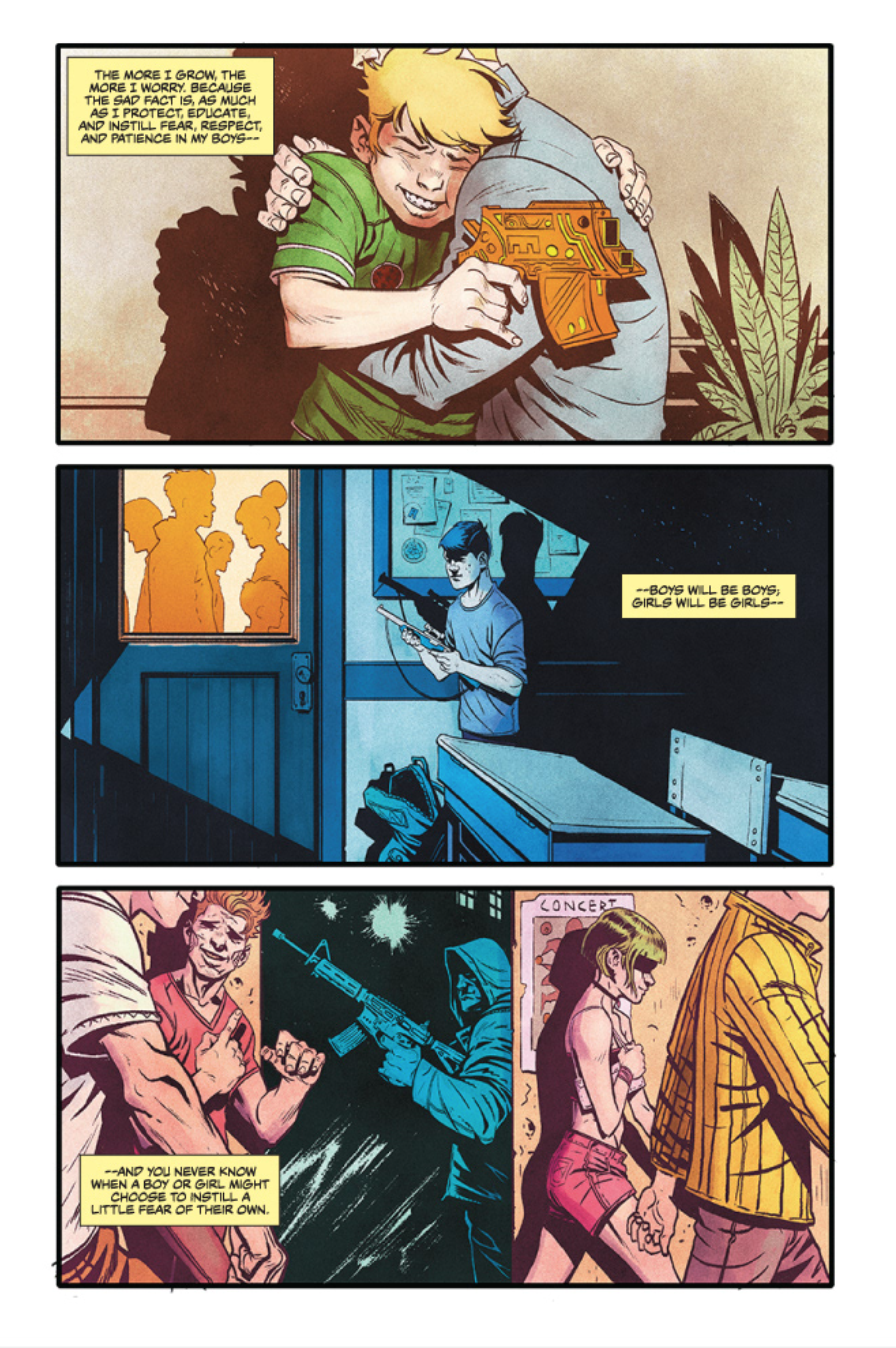
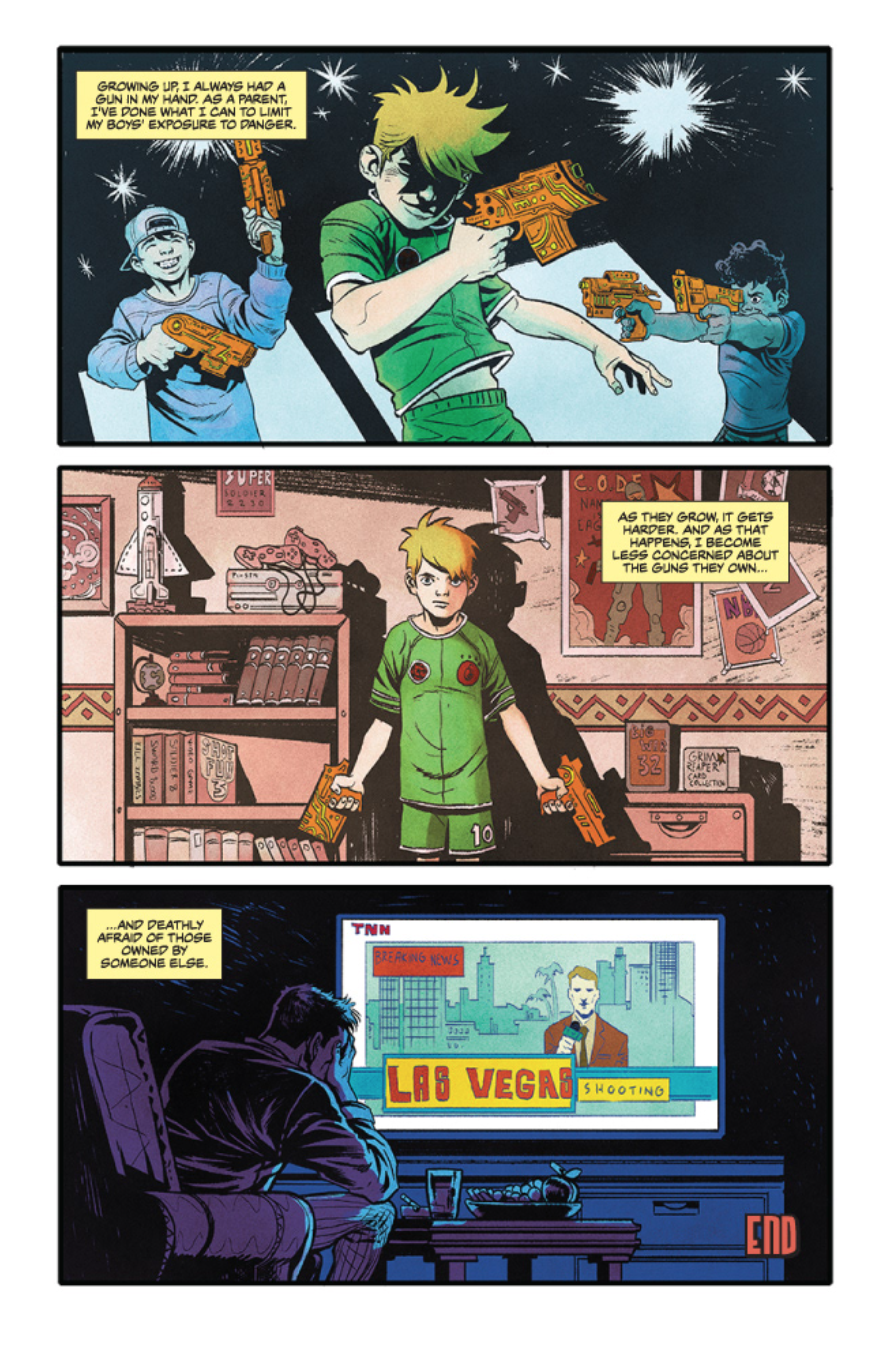
THE BUSINESS, AND A RETURN TO FORMAT
A few quick bullets before we go:
Hoping to get back to the standard format in June; we’ll have a main topic, and then some of what I’m reading and watching (heck, we haven’t talked about X-Men ’97 in depth yet, have we? Dang. Let’s get to that.)

I’m less than a thousand words from finishing my Holmes Loves Watson Multiverse of Mystery story, and it’s been pretty entertaining to write. This week I’m starting a new script for Pots & Panels, a cooking comics anthology (logo above) in which I’ve been invited to participate a story that features a heck of a line-up including Ron Marz, Tim Seeley, Phil Hester, B Clay Moore, Hilary Barta, and plenty more. I’m writing a new short story in a familiar food-based world with my pal and co-author John Broglia. Yep, that’s right, friends—you’re all about to get a brand-new new Savor story. More on that as we have more to share, but feel free to get the graphic novel from Dark Horse if you need to catch up…
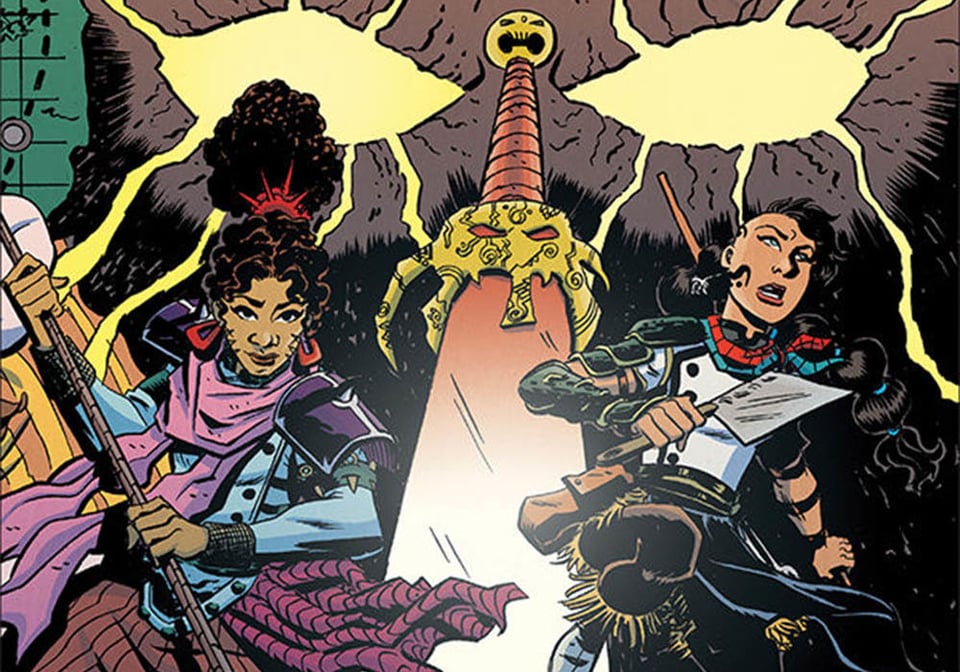
Meanwhile, I’ve completed the pitched for Projects Unwanted and Dog Day, and am starting to pitch them around. I’m beginning research and world-building documents for the Project Long Ago pitch, while moving head on Project Vigilant, a novel that’s currently holding at 26k words out of 85k. Once Long Ago is done, I have Project Orlando on deck, and I still want to finish the first volume of Project Red, a supernatural crime novel I’ve had on the shelf for far too long (it’s at 55k words out of 85k — why not just finish those last 30k, Kleid?!) Overall, though, I’m feeling pretty happy with how the 2024 Writing Plan seems to be progressing.
That said, I think I still want to draw something this year. So maybe it’s time to resurrect Project Creativity, and tackle it one panel per day for the next year. Yeah, that sounds like a decent goal.
Oh, and we’re a few short months away from the 20th anniversary of Ninety Candles…so I think some sort of new digital edition might be fun. Let’s keep musing on that.
That’s all we have this week, friends. Happy 49th birthday to Neil; thanks for celebrating with me. Here’s counting down to half a century, yeah?
—Neil